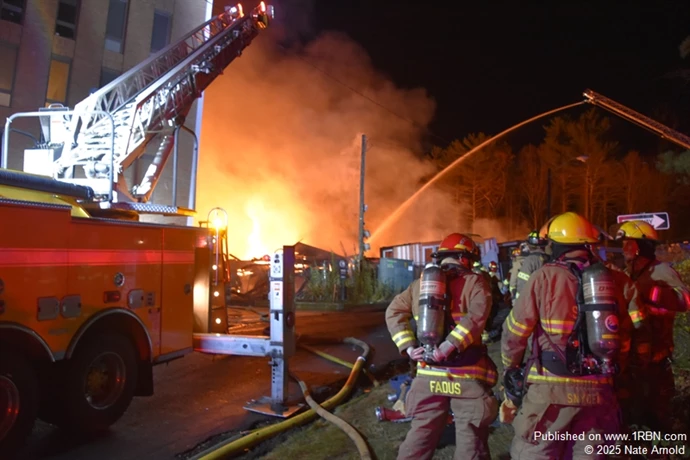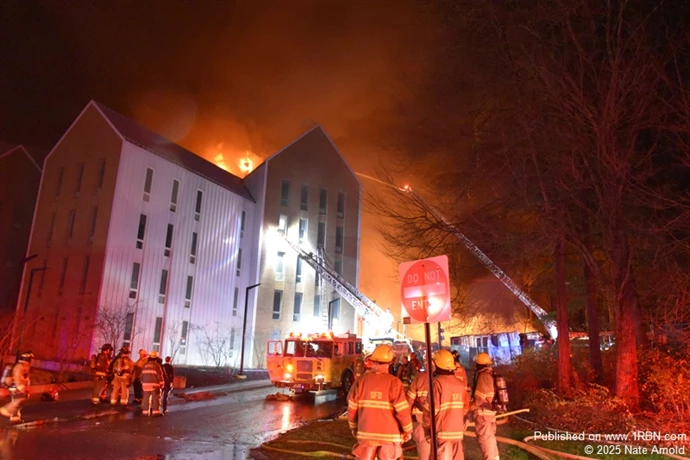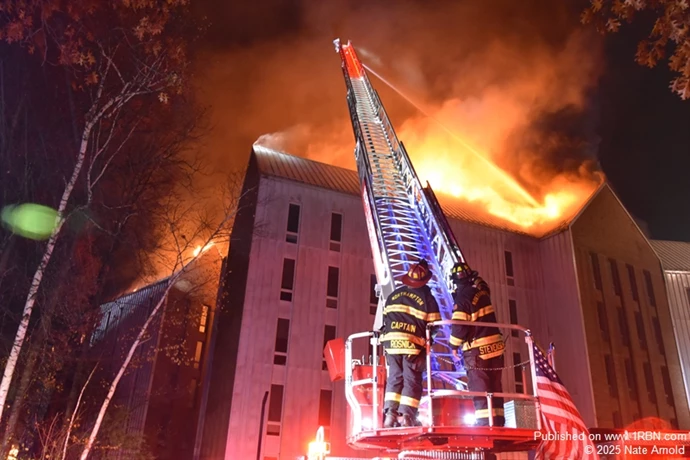Amherst Fire Crews Hindered by Low Water Pressure as Apartment Burns


Photo by Nate Arnold Crews await assignment just after the collapse of the original fire building.

Photo by Nate Arnold

Photo by Nate Arnold
AMHERST, MA - A fire that started in a construction site quickly grew and unfortunately spread to a neighboring apartment block that housed 230 college students thanks abysmally low pressure on the fire hydrants that protected the neighborhood.
At 8:27 p.m. on Friday, November 7, 2025 Amherst fire crews were toned out to respond to Olympia Drive for a reported structure fire. Engine Co. 2 whose firehouse sits 500-yards North of the location advised all units that they had "fire in the sky" above the address as they were leaving quarters. Arriving on scene less than 3 minutes later, they confirmed a multiple-story apartment block under construction was fully involved.
Before first water was even put on the fire, a recall of all off duty AFD personnel was sounded to bring more manpower to the scene while mutual aid was also en route. On scene however, crews encountered extremely weak pressure in every hydrant they opened as Engine 2's tank water ran dry. As crews tried to find a workable solution to the problem, including striking the second and third alarms for equipment to include a tanker shuttle operation and using all available tank water on the subsequent responding engines, the fire burned the unprotected apartment block to the point of total collapse and the radiant heat soon spread the fire to the Bravo side exposure, an already occupied five-story apartment block.
The residents of this block, mostly college students from UMass-Amherst, had already evacuated and were waiting in the parking lot across the street so fire crews could focus on trying to contain the damage. Once again, the low pressure hydrants slowed the fire fight and the tanker shuttle operation was only supplying enough water for a few minutes of suppression operations at a time.
Olympia Drive command was forced to abandon the interior attack as the fire took hold in the unsprinklered cockloft and ran the length of the building. The fire fighting operation then went to a long term defensive attack that necessitated the activation of the statewide Fire Mobilization Plan and brought in task forces from neighboring counties over the next 36 hours. The suppression operation used over one-million-gallons of water to fight the fire. So much so, that town officials had to declare a state of emergency due to dropping water levels and request town residents to stop all non-essential water usage to conserve water for the fire fight.
The University, in conjunction with the Red Cross, worked to assist all 230 residents displaced by the fire. No injuries were reported and the cause of the fire remains under investigation by the AFD/APD and the Office of the State Fire Marshal.








